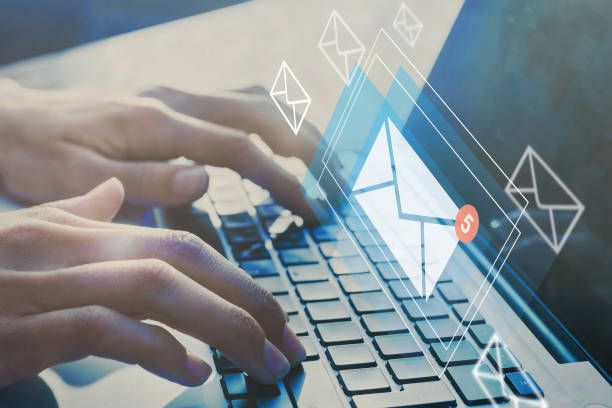Email deliverability is a crucial aspect of any email marketing campaign. Simply put, it refers to the ability of an email to successfully land in a recipient's inbox, rather than being blocked or sent to spam. Achieving good email deliverability is important because it ensures that your marketing messages actually reach your intended audience and have the potential to drive conversions.
However, not all emails are guaranteed to make it to their destination. Emails can bounce for a variety of reasons, including invalid email addresses, spam filters, and blocked domains. That's why in this post, we will be focusing on how to check if your emails will bounce and why this matters. By understanding the common reasons why emails bounce and utilizing tools to check for bounce risks, you can improve your email list management practices and ultimately increase the success of your email campaigns.
Why Emails Bounce

Emails can bounce for various reasons, such as when the email address is invalid or does not exist, or if the recipient's email server blocks the email due to spam filters or blocked domains. For example, if an email address is no longer valid or the recipient's inbox is full, the email will bounce back to the sender. These issues can severely impact email deliverability and prevent your message from reaching your intended audience. It's important to understand why emails bounce so that you can improve email list management practices and ensure that your emails are delivered successfully. By keeping email lists up-to-date, using double opt-in, and avoiding spam trigger words, you can reduce the risk of emails bouncing and improve your overall email campaign success.
Types of email bounces
Email bounces occur when an email is returned to the sender instead of being delivered to the recipient's inbox. There are two main types of email bounces: hard bounces and soft bounces.
- Hard Bounces: A hard bounce occurs when an email cannot be delivered to the recipient due to a permanent issue, such as an invalid or non-existent email address. This may happen when a recipient has closed or deleted their email account or if the email address was entered incorrectly. Hard bounces are permanent and should be removed from the email list.
- Soft Bounces: A soft bounce occurs when an email cannot be delivered to the recipient temporarily. This may happen when a recipient's inbox is full, the recipient's email server is down or experiencing technical difficulties, or the email is too large. Soft bounces are usually temporary and may resolve on their own. It's recommended to wait and try sending the email again before removing the recipient from the email list.
Understanding the different types of email bounces can help improve email deliverability by enabling the email marketer to take appropriate actions, such as removing invalid email addresses from the email list and resending emails that were soft bounced.
By reducing the number of bounced emails, email marketers can increase the effectiveness of their email campaigns and improve engagement with their subscribers.
Tools for Checking Email Deliverability

There are various tools available to help check if your emails will bounce, including email verification services and seed lists. Email verification services check the validity of email addresses and can help identify potential bounce risks. Seed lists, on the other hand, involve sending test emails to a list of known email addresses to gauge deliverability. Each tool works differently and can detect different types of bounce risks, such as invalid email addresses, spam filters, or blocked domains. When choosing which tool to use, it's important to consider the specific needs of your email campaigns and choose a tool that can provide the most relevant insights. For example, if you have a large email list, an email verification service may be the best option, whereas if you want to test how your emails are being delivered, a seed list may be more suitable.
Best Practices for Improving Email Deliverability

Improving email deliverability is crucial for the success of any email marketing campaign. Here are some best practices for improving email deliverability:
Keep Email Lists Up-to-Date: Keeping email lists up-to-date helps ensure that email addresses are still valid, reducing the risk of bounces. Regularly remove inactive subscribers and update any invalid or bounced email addresses to maintain a high-quality email list.
Use Double Opt-In: Double opt-in requires subscribers to confirm their email address and opt-in to receive emails. This helps confirm that subscribers actually want to receive your emails, reducing the likelihood of spam complaints and bounces.
Avoid Spam Trigger Words: Using certain words or phrases in email content can trigger spam filters, causing emails to be filtered as spam. Avoid using words like "free," "cash," or "limited time" in your email content to reduce the risk of your emails being marked as spam.
Personalize Your Emails: Personalizing your emails by using the subscriber's name or other relevant information can increase engagement and reduce the likelihood of emails being marked as spam.
Segment Your Email List: Segmentation involves dividing your email list into smaller groups based on subscriber behavior, interests, or other relevant factors. This helps ensure that your emails are more targeted and relevant, reducing the likelihood of subscribers marking your emails as spam.
Conclusion
In conclusion, checking email deliverability is essential for ensuring that your email marketing campaigns are successful. By using tools to check for bounce risks, understanding the common reasons why emails bounce, and implementing best practices such as keeping email lists up-to-date, using double opt-in, and avoiding spam trigger words, you can reduce the risk of bounced emails and improve your email deliverability. It's important to take action to improve your own email deliverability and share these best practices with others in the industry. By doing so, you can help ensure that email marketing remains an effective channel for reaching and engaging with your target audience.

